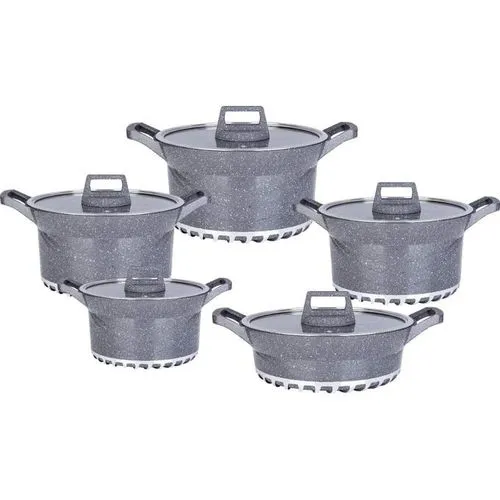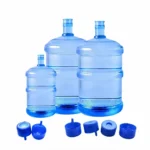Table of Contents
Is It Right for Your Kitchen?
Non-stick cookware has become a popular choice in kitchens worldwide due to its convenience and versatility. Whether you’re a professional chef or a home cook, non-stick pans can make cooking and cleaning much easier. However, like any kitchen tool, non-stick cookware comes with its own set of pros and cons. In this article, we’ll explore the advantages and disadvantages of Non-Stick Cookware to help you decide if it’s the right choice for your kitchen.
Advantages of Non-Stick Cookware
- Easy to Clean
One of the main benefits of non-stick cookware is its ease of cleaning. The smooth coating prevents food from sticking to the surface, which means you can quickly wash the pan with minimal effort. You often don’t need to soak or scrub non-stick pans, which is a huge time-saver. - Healthier Cooking
Non-stick pans require less oil or butter when cooking, which can help reduce your overall fat intake. This makes non stick cookware an excellent option for those looking to prepare healthier meals without sacrificing flavor. - Even Cooking
Non-stick cookware often heats up quickly and evenly, preventing hot spots that can burn food. This makes it easier to cook delicate items like eggs, pancakes, and fish without worrying about sticking or uneven cooking. - Lightweight
Non-stick pans are generally lighter than their stainless steel or cast iron counterparts. This makes them easier to handle, especially when moving a full pan from the stovetop to the oven or serving food directly to the table. - Versatility
Non-stick cookware can be used for a wide range of cooking tasks. From sautéing vegetables to frying eggs or making pancakes, non-stick pans are incredibly versatile, making them a staple in many kitchens.
Disadvantages of Non-Stick Cookware
- Limited Lifespan
One of the biggest drawbacks of non-stick cookware is its relatively short lifespan. Over time, the non-stick coating can wear off, making the pan less effective and increasing the likelihood of food sticking. This usually requires you to replace non-stick pans more frequently compared to other types of cookware. - Scratching and Chipping
Non-stick coatings are prone to scratches and chips, especially if you use metal utensils. Once the coating is damaged, the pan may become unsafe to use, as particles from the coating can mix with your food. To avoid this, you need to use wooden, silicone, or plastic utensils, which can sometimes feel limiting. - Temperature Sensitivity
Non-stick cookware is sensitive to high heat. Cooking at extremely high temperatures can cause the coating to break down and release harmful chemicals like perfluorooctanoic acid (PFOA) or polytetrafluoroethylene (PTFE), especially in older non-stick pans. While most modern non stick cookware is PFOA-free, it’s still best to avoid overheating these pans. - Not Oven-Safe
Many non-stick pans are not oven-safe, or they have a lower temperature tolerance compared to other types of cookware. This limits their use for recipes that require both stovetop cooking and oven finishing. Always check the manufacturer’s instructions before putting non stick cookware in the oven. - Environmental Concerns
The production of some non-stick coatings has raised environmental concerns. Although the industry has made strides in reducing harmful chemicals like PFOA, there is still some debate about the environmental impact of producing and disposing of non stick cookware. Opting for eco-friendly non-stick brands can mitigate this concern.
Conclusion
Non-stick cookware offers many advantages, such as easy cleaning, healthier cooking, and even heat distribution. However, it also comes with disadvantages like a shorter lifespan, susceptibility to scratching, and sensitivity to high heat. If you frequently cook delicate dishes and prioritize ease of use, non stick cookware can be a great addition to your kitchen. However, if you need cookware that’s highly durable and oven-safe, you might want to explore other options, such as stainless steel or cast iron.
By weighing the pros and cons, you can make an informed decision about whether non-stick cookware is the right choice for your cooking needs.
What are the advantages and disadvantages of using non-stick pans?
Non-stick pans are popular for their convenience, as they’re easy to clean and require less oil, making them ideal for low-fat cooking and delicate foods like eggs or pancakes. However, they’re not designed for high-heat cooking, which can damage the coating and potentially release harmful fumes. Over time, the coating may also wear off, reducing the pan’s effectiveness and potentially posing health concerns if the material flakes. Despite these drawbacks, non-stick pans are favored for everyday cooking due to their ease of use.
Is cooking in nonstick pans safe?
Yes, cooking in non-stick pans is generally safe if used properly. Modern non-stick coatings, such as PTFE (Teflon), are stable and safe at medium to low temperatures. However, issues can arise if the pan is overheated (typically above 500°F or 260°C), which may release fumes that could cause temporary flu-like symptoms in humans and are harmful to birds. To maintain safety, use non-stick pans on low to medium heat, avoid preheating an empty pan, and replace any pans with chipped or scratched coatings.
What kind of cookware is healthiest?
The healthiest cookware options are made from materials that don’t leach chemicals into food, even at high temperatures. Cast iron is a good choice because it’s durable, naturally non-stick when seasoned, and can add beneficial iron to food. Stainless steel is another healthy option since it’s non-reactive and doesn’t release metals unless heavily scratched. Pure ceramic cookware is safe for high-heat cooking and free of harmful chemicals, while glass is completely inert, making it ideal for baking and storage. Enameled cast iron combines cast iron’s benefits with a protective coating, making it safe for acidic foods.






